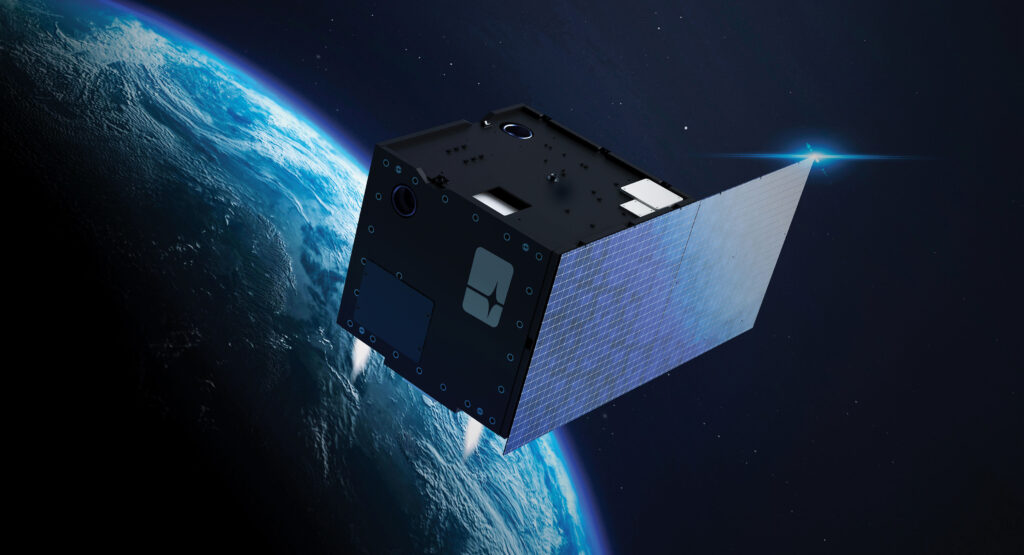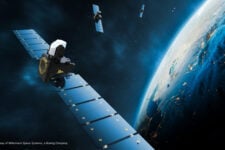
Victus Nox (Millennium Space Systems)
WASHINGTON — The Space Force’s upcoming Victus Nox mission aims to push technology to the edge — and might do the same with the contractors and Guardians involved, who will need to be on-site and ready to go around the clock for six months as they wait for Space Systems Command (SSC) to lower the checkered flag on launch.
SSC last September announced it had contracted Millennium to produce the Victus Nox satellite and ground segment, and Firefly Aerospace to provide the launch for its Tactically Responsive Space-3 (TacRS-3) “operational” experiment. Run by SSC’s Space Safari, established to directly respond to urgent launch needs of Space Command and/or other Combatant Commands, TacRS-3 is designed both to prove the feasibility of rapid launch turnaround and develop a space-based neighborhood watch for low Earth orbit (LEO).
“There’s a window of six months for that launch phase; a 24-hour call up can happen anywhere in that six months,” Jason Kim, CEO of Millennium Space Systems, said in an interview April 20. “And so what does that mean? That means I have to have three teams that can all do the same thing because it’s got to be 24/7 … And the same thing for Firefly.”
Speaking to the Space Foundation’s annual Space Symposium on the same day, Firefly CEO Bill Weber stressed that the Victus Nox (translating to “conquer the night”) mission is “as real as it can get,” carrying a “live payload” with all that that demands.
“It’s a live mission. It’s not training. It’s not a practice run. It’s not a test article or anything like that. We are in a mission posture right now. We are training like we will fight,” he said.
Likewise, Kim told Breaking Defense that Millennium doesn’t “get a pass” on anything normally involved in a national security launch — from making sure the satellite bus met specs to cybersecurity requirements.
Currently, Kim said, Millennium is in the “activation” phase of the Victus Nox mission, waiting for Space Safari to give the company an order to drive their mini-fridge-sized satellite 174 miles north from the factory in El Segundo to Vandenberg SLB — where Firefly has a payload processing center to enable launch from Space Launch Complex-2 — all within 60 hours.
And once that is done, the six month countdown to launch call up begins, he explained.
“We would be on standby. And once they get the [24-hour launch] call up, that means we have to mate [the satellite] with the Firefly launch vehicle, fuel it and then launch it into low Earth orbit,” Kim said.
TacRS-3 is building on Space Safari’s first tactically responsive space mission, on June 13, 2021, which was called Tactically Responsive Launch-2 (TacRL-2). That payload also was a small space domain awareness satellite, called Odyssey and built and operated by the Air Force Research Laboratory and Space Dynamics Laboratory. TacRL-2 was able to turn around a launch within 11 months, as opposed to the previous average of two to five years.
By contrast, TacRS-3’s 24-hour goal is a big leap.
“It’s challenging. It’s not the status quo. We’re pushing the envelope with the Space Force,” Kim said.
Lt. Col. MacKenzie Birchenough, Space Safari’s tactically responsive space chief, told the the same symposium panel that her office recognizes that the Victus Nox mission is “probably not going to get everything right.”
She added that the office thus already is in the initial planning stages for a follow on to TacRS-3, slated for sometime next year.
The Space Force fiscal 2024 budget request included a first-time ask for tactically responsive space, a total of $60 million over two years. In years past, the service has demurred from funding the effort despite congressional goading and budget add-ons.
‘Dead on arrival’: Key House appropriators oppose transfer of Guard units to Space Force
“The states need to be consulted, and need to be full partners moving forward in any major change such as this,” said Minnesota Rep. Betty McCollum, the defense subcommittee’s top Democrat.


























